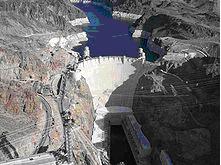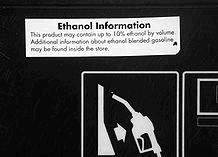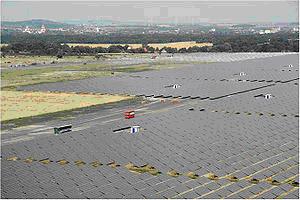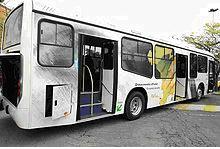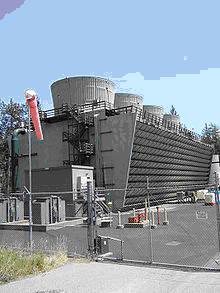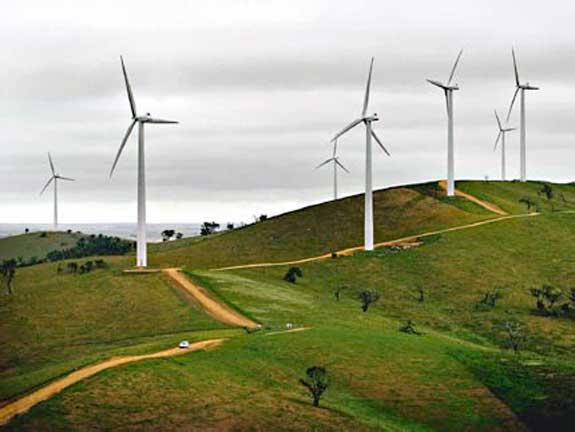Technical Paper Title: Renewable Energy
Authors: V.Divya & P.Sashanka, 2nd BTech, EEE
College: Sai Spurthi Institute of Technology, Sathupalli, Khammam
ABSTRACT
Renewable energy is energy which comes from natural resources such as sunlight, wind, rain, tides, and geothermal heat, which are renewable (naturally replenished). In 2006, about 18% of global final energy consumption came from renewables, with 13% coming from traditional biomass, which is mainly used for heating, and 3% from hydroelectricity. New renewables (small hydro, modern biomass, wind, solar, geothermal, and bio fuels) accounted for another 2.4% and are growing very rapidly. The share of renewables in electricity generation is around 18%, with 15% of global electricity coming from hydroelectricity and 3.4% from new renewables.
INTRODUCTION
Wind power is growing at the rate of 30% annually, with a worldwide installed capacity of 157,900 megawatts (MW) in 2009, and is widely used in Europe, Asia, and the United States. The annual manufacturing output of the photo-voltaic industry reached 6,900 MW in 2008, and photovoltaic (PV) power stations are popular in Germany and Spain. Solar thermal power stations operate in the USA and Spain, and the largest of these is the 354 MW SEGS power plant in the Mojave Desert. The world’s largest geothermal power installation is The Geysers in California, with a rated capacity of 750 MW. Brazil has one of the largest renewable energy programs in the world, involving production of ethanol fuel from sugar cane, and ethanol now provides 18% of the country’s automotive fuel. Ethanol fuel is also widely available in the USA.
While most renewable energy projects and production is large-scale, renewable technologies are also suited to small off-grid applications, sometimes in rural and remote areas, where energy is often crucial in human development. Kenya has the world’s highest household solar ownership rate with roughly 30,000 small (20–100 watt) solar power systems sold per year.
Some renewable energy technologies are criticized for being intermittent or unsightly, yet the renewable energy market continues to grow. Climate change concerns, coupled with high oil prices, peak oil, and increasing government support, are driving increasing renewable energy legislation, incentives and commercialization. New government spending, regulation and policies helped the industry weather the 2009 economic crisis better than many other sectors.
Renewable energy flows involve natural phenomena such as sunlight, wind, tides and geothermal heat, as the International Energy Agency explains:
Renewable energy is derived from natural processes that are replenished constantly. In its various forms, it derives directly from the sun, or from heat generated deep within the earth. Included in the definition is electricity and heat generated from solar, wind, ocean, hydropower, biomass, geothermal resources, and biofuels and hydrogen derived from renewable resources.
Each of these sources has unique characteristics which influence how and where they are used.
Wind power
Airflows can be used to run wind turbines. Modern wind turbines range from around 600 kW to 5 MW of rated power, although turbines with rated output of 1.5–3 MW have become the most common for commercial use; the power output of a turbine is a function of the cube of the wind speed, so as wind speed increases, power output increases dramatically. Areas where winds are stronger and more constant, such as offshore and high altitude sites, are preferred locations for wind farms. Typical capacity factors are 20-40%, with values at the upper end of the range in particularly favorable sites.
Globally, the long-term technical potential of wind energy is believed to be five times total current global energy production, or 40 times current electricity demand. This could require large amounts of land to be used for wind turbines, particularly in areas of higher wind resources. Offshore resources experience mean wind speeds of ~90% greater than that of land, so offshore resources could contribute substantially more energy. This number could also increase with higher altitude ground-based or airborne wind turbines.
Wind power is renewable and produces no greenhouse gases during operation, such as carbon dioxide and methane.
Hydropower
The Hoover Dam when completed in 1936 was both the world’s largest electric-power generating station and the world’s largest concrete structure.
Energy in water can be harnessed and used. Since water is about 800 times denser than air, even a slow flowing stream of water, or moderate sea swell, can yield considerable amounts of energy. There are many forms of water energy:
• Hydroelectric energy is a term usually reserved for large-scale hydroelectric dams. Examples are the Grand Coulee Dam in Washington State and the Akosombo Dam in Ghana.
• Micro hydro systems are hydroelectric power installations that typically produce up to 100 kW of power. They are often used in water rich areas as a remote-area power supply (RAPS). There are many of these installations around the world, including several delivering around 50 kW in the Solomon Islands.
• Damless hydro systems derive kinetic energy from rivers and oceans without using a dam.
• Osmotic power
• Ocean energy describes all the technologies to harness energy from the ocean and the sea. This includes marine current power, ocean thermal energy conversion, and tidal power.
Solar energy
Mono crystalline solar cell
Solar energy is the energy derived from the sun through the form of solar radiation. Solar powered electrical generation relies on photovoltaic and heat engines. A partial list of other solar applications includes space heating and cooling through solar architecture, day lighting, solar hot water, solar cooking, and high temperature process heat for industrial purposes.
Solar technologies are broadly characterized as either passive solar or active solar depending on the way they capture, convert and distribute solar energy. Active solar techniques include the use of photovoltaic panels and solar thermal collectors to harness the energy. Passive solar techniques include orienting a building to the Sun, selecting materials with favorable thermal mass or light dispersing properties, and designing spaces that naturally circulate air.
Bio Fuel
Information on pump regarding ethanol fuel blend up to 10%, California
Liquid bio fuel is usually either bio alcohol such as bio ethanol or oil such as biodiesel.
Bio ethanol is an alcohol made by fermenting the sugar components of plant materials and it is made mostly from sugar and starch crops. With advanced technology being developed, cellulosic biomass, such as trees and grasses, are also used as feed stocks for ethanol production. Ethanol can be used as a fuel for vehicles in its pure form, but it is usually used as a gasoline additive to increase octane and improve vehicle emissions. Bio ethanol is widely used in the USA and in Brazil.
Biodiesel is made from vegetable oils, animal fats or recycled greases. Biodiesel can be used as a fuel for vehicles in its pure form, but it is usually used as a diesel additive to reduce levels of particulates, carbon monoxide, and hydrocarbons from diesel-powered vehicles. Biodiesel is produced from oils or fats using trans-etherification and is the most common bio fuel in Europe.
Bio fuels provided 1.8% of the world’s transport fuel in 2008.
Geothermal energy
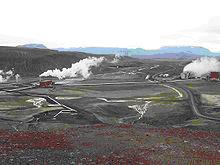
Krafla Geothermal Station in northeast Iceland
Geothermal energy is energy obtained by tapping the heat of the earth itself, both from kilometers deep into the Earth’s crust in some places of the globe or from some meters in geothermal heat pump in all the places of the planet. It is expensive to build a power station but operating costs are low resulting in low energy costs for suitable sites. Ultimately, this energy derives from heat in the Earth’s core.
Three types of power plants are used to generate power from geothermal energy: dry steam, flash, and binary. Dry steam plants take steam out of fractures in the ground and use it to directly drive a turbine that spins a generator. Flash plants take hot water, usually at temperatures over 200 °C, out of the ground, and allows it to boil as it rises to the surface then separates the steam phase in steam/water separators and then runs the steam through a turbine. In binary plants, the hot water flows through heat exchangers, boiling an organic fluid that spins the turbine. The condensed steam and remaining geothermal fluid from all three types of plants are injected back into the hot rock to pick up more heat.
The geothermal energy from the core of the Earth is closer to the surface in some areas than in others. Where hot underground steam or water can be tapped and brought to the surface it may be used to generate electricity. Such geothermal power sources exist in certain geologically unstable parts of the world such as Chile, Iceland, New Zealand, United States, the Philippines and Italy. The two most prominent areas for this in the United States are in the Yellowstone basin and in northern California. Iceland produced 170 MW geothermal power and heated 86% of all houses in the year 2000 through geothermal energy. Some 8000 MW of capacity is operational in total.
There is also the potential to generate geothermal energy from hot dry rocks. Holes at least 3 km deep are drilled into the earth. Some of these holes pump water into the earth, while other holes pump hot water out. The heat resource consists of hot underground radiogenic granite rocks, which heat up when there is enough sediment between the rock and the earth’s surface. Several companies in Australia are exploring this technology.
Growth of renewables
From the end of 2004 to the end of 2008, solar photovoltaic (PV) capacity increased six fold to more than 16 giga watts (GW), wind power capacity increased 250 percent to 121 GW, and total power capacity from new renewables increased 75 percent to 280 GW. During the same period, solar heating capacity doubled to 145 giga watts-thermal (GWth), while biodiesel production increased six fold to 12 billion liters per year and ethanol production doubled to 67 billion liters per year.
| Selected renewable energy indicators | |||
| Selected global indicators | 2006 | 2007 | 2008 |
| Investment in new renewable capacity (annual) | 63 | 104 | 120 billion USD |
| Existing renewables power capacity, including large-scale hydro |
1,020 | 1,070 | 1,140 GWe |
| Existing renewables power capacity, excluding large hydro |
207 | 240 | 280 GWe |
| Wind power capacity (existing) | 74 | 94 | 121 GWe |
| Biomass heating | 250 GWth | ||
| Solar hot water/ Space heating | 145 GWth | ||
| Geothermal heating | 50 GWth | ||
| Ethanol production (annual) | 39 | 50 | 67 billion liters |
| Countries with policy targets for renewable energy use |
66 | 73 | |
New generation of solar thermal plants
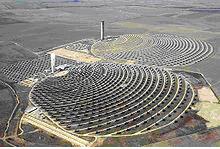
Large solar thermal power stations include the 354 MW Solar Energy Generating Systems power plant in the USA, Nevada Solar One (USA, 64 MW), Andasol 1 (Spain, 50 MW), Andasol 2 (Spain, 50 MW), PS20 solar power tower (Spain, 20 MW), and the PS10 solar power tower (Spain, 11 MW).
The solar thermal power industry is growing rapidly with 1.2 GW under construction as of April 2009 and another 13.9 GW announced globally through 2014. Spain is the epicenter of solar thermal power development with 22 projects for 1,037 MW under construction, all of which are projected to come online by the end of 2010. In the United States, 5,600 MW of solar thermal power projects have been announced. In developing countries, three World Bank projects for integrated solar thermal/combined-cycle gas-turbine power plants in Egypt, Mexico, and Morocco have been approved.
World’s largest photovoltaic power plants
40 MW PV Array installed in Waldpolenz, Germany
As of October 2009, the largest photovoltaic (PV) power plants in the world are the Olmedilla Photovoltaic Park (Spain, 60 MW), the Strasskirchen Solar Park (Germany, 54 MW), the Lieberose Photovoltaic Park (Germany, 53 MW), the Puertollano Photovoltaic Park (Spain, 50 MW), the Moura photovoltaic power station (Portugal, 46 MW), and the Waldpolenz Solar Park (Germany, 40 MW).
Many of these plants are integrated with agriculture and some use innovative tracking systems that follow the sun’s daily path across the sky to generate more electricity than conventional fixed-mounted systems. There are no fuel costs or emissions during operation of the power stations.
Topaz Solar Farm is a proposed 550 MW solar photovoltaic power plant which is to be built northwest of California Valley in the USA at a cost of over $1 billion.[43] High Plains Ranch
is a proposed 250 MW solar photovoltaic power plant which is to be built on the Carrizo Plain, northwest of California Valley.
However, when it comes to renewable energy systems and PV, it is not just large systems that matter. Building-integrated photovoltaics or “onsite” PV systems have the advantage of being matched to end use energy needs in terms of scale. So the energy is supplied close to where it is needed.
Use of ethanol for transportation
E95 trial bus operating in São Paulo, Brazil.
Since the 1970s, Brazil has had an ethanol fuel program which has allowed the country to become the world’s second largest producer of ethanol (after the United States) and the world’s largest exporter. Brazil’s ethanol fuel program uses modern equipment and cheap sugar cane as feedstock, and the residual cane-waste (bagasse) is used to process heat and power. There are no longer light vehicles in Brazil running on pure gasoline. By the end of 2008 there were 35,000 filling stations throughout Brazil with at least one ethanol pump.
Most cars on the road today in the U.S. can run on blends of up to 10% ethanol, and motor vehicle manufacturers already produce vehicles designed to run on much higher ethanol blends. Ford, DaimlerChrysler, and GM are among the automobile companies that sell “flexible-fuel” cars, trucks, and minivans that can use gasoline and ethanol blends ranging from pure gasoline up to 85% ethanol (E85). By mid-2006, there were approximately six million E85-compatible vehicles on U.S. roads.[49] The challenge is to expand the market for biofuels beyond the farm states where they have been most popular to date. Flex-fuel vehicles are assisting in this transition because they allow drivers to choose different fuels based on price and availability. The Energy Policy Act of 2005, which calls for 7.5 billion gallons of biofuels to be used annually by 2012, will also help to expand the market.
Geothermal Energy Prospects
The West Ford Flat power plant is one of 21 power plants at The Geysers.
The Geysers, is a geothermal power field located 72 miles (116 km) north of San Francisco, California. It is the largest geothermal development in the world outputting over 750 MW.
Geothermal power capacity surpassed 10 GW in 2008. The United States is the world leader, with some 120 projects under development in early 2009, representing at least 5 GW. Other countries with significant recent growth in geothermal include Australia, El Salvador, Guatemala, Iceland, Indonesia, Kenya, Mexico, Nicaragua, Papua New Guinea, and Turkey. As of 2008, geothermal power development was under way in more than 40 countries. Geothermal power accounted for 17 percent of the Philippines total power mix at the end of 2008, with installed capacity close to 2,000 megawatts.
Geothermal (ground source) heat pumps represented an estimated 30 GWth of installed capacity at the end of 2008, with other direct uses of geothermal heat (i.e., for space heating, agricultural drying and other uses) reaching an estimated 15 GWth. As of 2008, at least 76 countries use direct geothermal energy in some form.
Wave Farms Expansion
One of 3 Pelamis Wave Energy Converters in the harbor of Peniche, Portugal
Portugal now has the world’s first commercial wave farm, the Agucadoura Wave Park, officially opened in September 2008. The farm uses three Pelamis P-750 machines generating 2.25 MW. Initial costs are put at € 8.5 million. A second phase of the project is now planned to increase the installed capacity to 21MW using a further 25 Pelamis machines.
Funding for a wave farm in Scotland was announced in February, 2007 by the Scottish Government, at a cost of over 4 million pounds, as part of a UK£13 million funding packages for ocean power in Scotland. The farm will be the world’s largest with a capacity of 3MW generated by four Pelamis machines.
Hydroelectricity
The major advantage of hydroelectric systems is the elimination of the cost of fuel. Other advantages include longer life than fuel-fired generation, low operating costs, and the provision of facilities for water sports. Operation of pumped-storage plants improves the daily load factor of the generation system. Overall, hydroelectric power can be far less expensive than electricity generated from fossil fuels or nuclear energy, and areas with abundant hydroelectric power attract industry.
However, there are several disadvantages of hydroelectricity systems. These include: dislocation of people living where the reservoirs are planned, release of significant amounts of carbon dioxide at construction and flooding of the reservoir, disruption of aquatic ecosystems and birdlife, adverse impacts on the river environment, potential risks of sabotage and terrorism, and in rare cases catastrophic failure of the dam wall.
Large hydroelectric power is considered to be a renewable energy by a large number of sources, however, many groups have lobbied for it to be excluded from renewable electricity standards, any initiative to promote the use of renewable energies, and sometimes the definition of renewable itself. Some organizations, including US federal agencies, will specifically refer to “non-hydro renewable energy”. Many laws exist that specifically label “small hydro” as renewable or sustainable and large hydro as not. Furthermore, the line between what is small or large also differs by governing body.
Hydroelectric power is now more difficult to site in developed nations because most major sites within these nations are either already being exploited or may be unavailable for other reasons such as environmental considerations.
Wind Farms
Wind power is one of the most environmentally friendly sources of renewable energy
A wind farm, when installed on agricultural land, has one of the lowest environmental impacts of all energy sources:
• Wind power occupies less land area per kilowatt-hour (kWh) of electricity generated than any other energy conversion system, apart from rooftop solar energy, and is compatible with grazing and crops.
• It generates the energy used in its construction in just 3 months of operation, yet its operational lifetime is 20–25 years.
• Greenhouse gas emissions and air pollution produced by its construction are low and declining. There are no emissions or pollution produced by its operation.
• In substituting for base-load coal power, wind power produces a net decrease in greenhouse gas emissions and air pollution, and a net increase in biodiversity.
• Modern wind turbines are almost silent and rotate so slowly (in terms of revolutions per minute) that they are rarely a hazard to birds.
Studies of birds and offshore wind farms in Europe have found that there are very few bird collisions. Several offshore wind sites in Europe have been in areas heavily used by seabirds. Improvements in wind turbine design, including a much slower rate of rotation of the blades and a smooth tower base instead of perchable lattice towers, have helped reduce bird mortality at wind farms around the world. However older smaller wind turbines may be hazardous to flying birds. Birds are severely impacted by fossil fuel energy; examples include birds dying from exposure to oil spills, habitat loss from acid rain and mountaintop removal coal mining, and mercury poisoning.
Longevity Issues
Though a source of renewable energy may last for billions of years, renewable energy infrastructure, like hydroelectric dams, will not last forever, and must be removed and replaced at some point. Events like the shifting of riverbeds, or changing weather patterns could potentially alter or even halt the function of hydroelectric dams, lowering the amount of time they are available to generate electricity.
Some have claimed that geothermal being a renewable energy source depends on the rate of extraction being slow enough such that depletion does not occur. If depletion does occur, the temperature can regenerate if given a long period of non-use.
The government of Iceland states: “It should be stressed that the geothermal resource is not strictly renewable in the same sense as the hydro resource.” It estimates that Iceland’s geothermal energy could provide 1700 MW for over 100 years, compared to the current production of 140 MW. Radioactive elements in the Earth’s crust continuously decay, replenishing the heat. The International Energy Agency classifies geothermal power as renewable.
Bio Fuels Production
All biomass needs to go through some of these steps: it needs to be grown, collected, dried, fermented and burned. All of these steps require resources and an infrastructure.
Some studies contend that ethanol is “energy negative”, meaning that it takes more energy to produce than is contained in the final product. However, a large number of recent studies, including a 2006 article in the journal Science offer the opinion that fuels like ethanol are energy positive. Furthermore, fossil fuels also require significant energy inputs which have seldom been accounted for in the past.
Additionally, ethanol is not the only product created during production, and the energy content of the by-products must also be considered. Corn is typically 66% starch and the remaining 33% is not fermented. This unfermented component is called distillers grain, which is high in fats and proteins, and makes good animal feed. In Brazil, where sugar cane is used, the yield is higher, and conversion to ethanol is somewhat more energy efficient than corn. Recent developments with cellulosic ethanol production may improve yields even further.
According to the International Energy Agency, new biofuels technologies being developed today, notably cellulosic ethanol, could allow biofuels to play a much bigger role in the future than previously thought. Cellulosic ethanol can be made from plant matter composed primarily of inedible cellulose fibers that form the stems and branches of most plants. Crop residues (such as corn stalks, wheat straw and rice straw), wood waste, and municipal solid waste are potential sources of cellulosic biomass. Dedicated energy crops, such as switchgrass, are also promising cellulose sources that can be sustainably produced in many regions of the United States.
The ethanol and biodiesel production industries also create jobs in plant construction, operations, and maintenance, mostly in rural communities. According to the Renewable Fuels Association, the ethanol industry created almost 154,000 U.S. jobs in 2005 alone, boosting household income by $5.7 billion. It also contributed about $3.5 billion in tax revenues at the local, state, and federal levels.
Comparison with other power sources
Comparisons of life-cycle greenhouse gas emissions
Competition with nuclear power
Nuclear power continues to be considered as an alternative to fossil-fuel power sources (see Low carbon power generation), and in 1956, when the first peak oil paper was presented, nuclear energy was presented as the replacement for fossil fuels. However, the prospect of increased nuclear power deployment was seriously undermined in the United States as a result of the Three Mile Island accident, and in the rest of the world after the Chernobyl disaster. This trend is slowly reversing, and several new nuclear reactors are scheduled for construction.
Physicist Bernard Cohen proposed in 1983 that uranium dissolved in seawater, when used in fast neutron reactors, is effectively inexhaustible and constantly replenished by rivers, and could therefore be considered a renewable source of energy. However, this idea is not universally accepted, and issues such as peak uranium and uranium depletion are ongoing debates.
Conclusions
The U.S. electric power industry now relies on large, central power stations, including coal, natural gas, nuclear, and hydropower plants that together generate more than 95% of the nation’s electricity. Over the next few decades uses of renewable energy could help to diversify the nation’s bulk power supply. Already, appropriate renewable resources (which exclude large hydropower) produce 12% of northern California’s electricity.
Although most of today’s electricity comes from large, central-station power plants, new technologies offer a range of options for generating electricity nearer to where it is needed, saving on the cost of transmitting and distributing power and improving the overall efficiency and reliability of the system.
Improving energy efficiency represents the most immediate and often the most cost-effective way to reduce oil dependence, improve energy security, and reduce the health and environmental impact of the energy system. By reducing the total energy requirements of the economy, improved energy efficiency could make increased reliance on renewable energy sources more practical and affordable.

